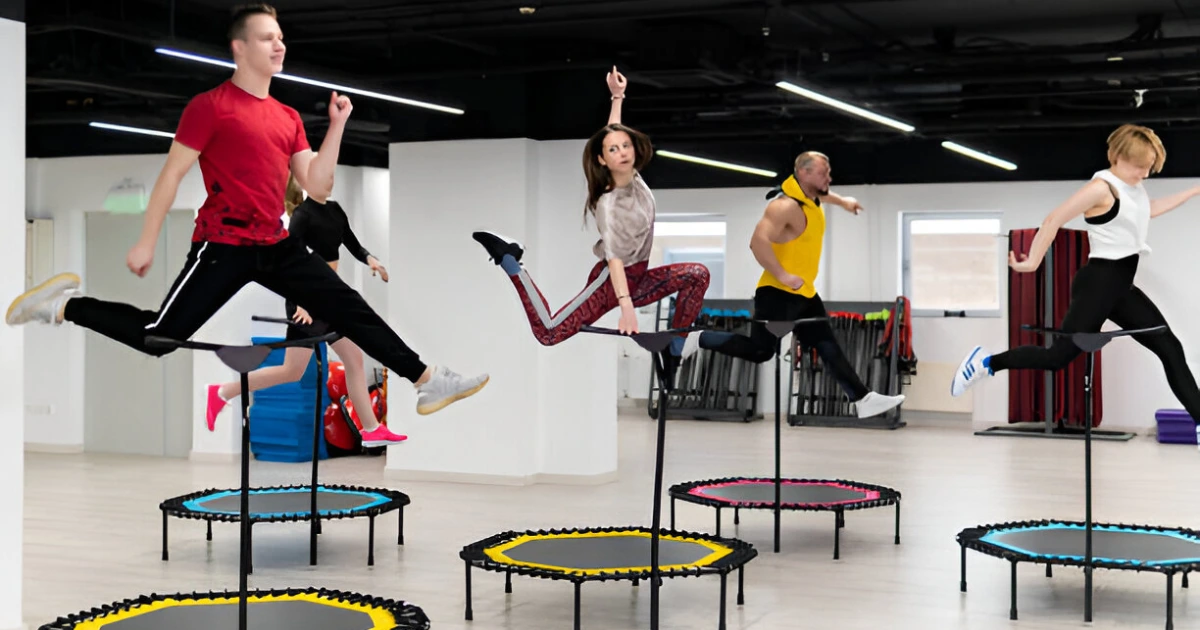Trampoline Fitness Revolution: The Science Behind Bouncing to Better Health
Table of Contents
Have you ever thought that the simple act of bouncing could transform your health? Trampoline fitness isn’t just child’s play—it’s a revolutionary, fun, and efficient way to boost your overall well-being. Whether you’re looking to improve strength, balance, or simply have fun while staying fit, a trampoline could be the missing piece of your wellness routine.
In this article, you’ll discover the science behind trampoline fitness, its incredible benefits, and how to incorporate it into your daily life.
The Growing Trend of Trampoline Fitness
Trampoline fitness has been gaining traction across the USA as a creative way to combine fun and exercise. Rebounding on a mini trampoline is low-impact, making it easy on the joints, and it offers a full-body workout like no other. With just a few minutes of bouncing, you’re engaging your core, improving coordination, and strengthening your cardiovascular system.
Let’s explore why so many people are jumping on the trampoline fitness bandwagon.
Benefits of Trampolines for Health
- Full-Body Workout: Jumping on a trampoline activates multiple muscle groups at once. Every bounce strengthens your core, legs, and arms while improving flexibility and balance.
- Low-Impact Cardio: Unlike running, trampoline fitness reduces stress on your joints, making it ideal for individuals with joint pain or injuries.
- Improved Balance and Coordination: Regular rebounding improves proprioception (your body’s awareness of its position) and balance.
- Bone Density Boost: Jumping puts gentle stress on bones, stimulating growth and preventing conditions like osteoporosis.
- Stress Relief and Mental Clarity: Bouncing on a trampoline triggers the release of endorphins, combating stress and mental fatigue.
Getting Started with Mini Trampoline Exercises
Step 1: Choosing the Right Mini Trampoline
– Look for a sturdy, well-constructed trampoline with non-slip pads.
– Opt for one with a handlebar if you need extra stability.
Step 2: Warm Up First
Spend 2–3 minutes stretching or walking in place before rebounding. This prevents injury and prepares your muscles for the workout.
Step 3: Easy Mini Trampoline Exercises to Try
Basic Bounce
Stand with feet shoulder-width apart and gently bounce up and down. Focus on keeping your balance and engaging your core.
High Knees
Bounce while lifting your knees as high as possible. Alternate legs and maintain a steady pace for 1–2 minutes.
Twist Jump
Jump and twist your torso from side to side, keeping your legs together. This exercise engages your core and obliques.
The Science Behind Rebounding for Better Fitness
What makes rebounding such a powerful workout? It’s all about physics and biology. The up-and-down motion creates a unique combination of forces that:
- Stimulate lymphatic drainage, helping your body detox naturally.
- Increase cardiovascular strength by challenging your heart to adapt to changing pressures.
- Improve cellular health by increasing oxygen flow to tissues.
Studies show that just 15–20 minutes of trampoline fitness can burn as many calories as running for the same duration.
Tips for a Safe Trampoline Fitness Routine
- Use Proper Form: Always keep your knees slightly bent and engage your core.
- Wear the Right Gear: Comfortable workout clothes and non-slip socks can enhance stability.
- Start Slow: If you’re a beginner, focus on low-intensity exercises before progressing to advanced moves.
- Stay Hydrated: Rebounding works up a sweat, so drink water before and after your session.
FAQ: Trampoline Fitness
Is trampoline fitness suitable for all age groups?
Yes, trampoline fitness is adaptable for all ages, though elderly individuals and those with specific health conditions should consult a doctor before starting.
How often should I use a trampoline for fitness?
Aim for 3–5 sessions per week, with each session lasting 15–30 minutes.
Are trampolines safe for children?
Mini trampolines designed for fitness are generally safe for supervised use. Ensure kids follow safety guidelines to avoid injury.
Trampoline Fitness vs. Traditional Cardio: A Quick Comparison
| Factor | Trampoline Fitness | Traditional Cardio |
|———————|———————-|——————–|
| Impact on Joints | Low-impact | Varies (can be high) |
| Fun Factor | High | Moderate |
| Muscle Engagement | Full-body workout | Varies |
| Calories Burned | ~200–300 calories | ~250–350 calories |
Conclusion: Bounce Your Way to Better Health
Trampoline fitness is more than just exercise—it’s a movement that combines fun and functionality. Whether you want to improve your physical health, mental well-being, or simply add variety to your workout routine, rebounding is a fantastic option.
So, why not jumpstart your fitness journey today? Find a mini trampoline, try out the exercises, and experience the benefits of trampoline fitness for yourself.
Your body (and mind) will thank you for it!
Have you tried trampoline fitness? Share your experience in the comments below or explore local stores to find the perfect mini trampoline for your home.







